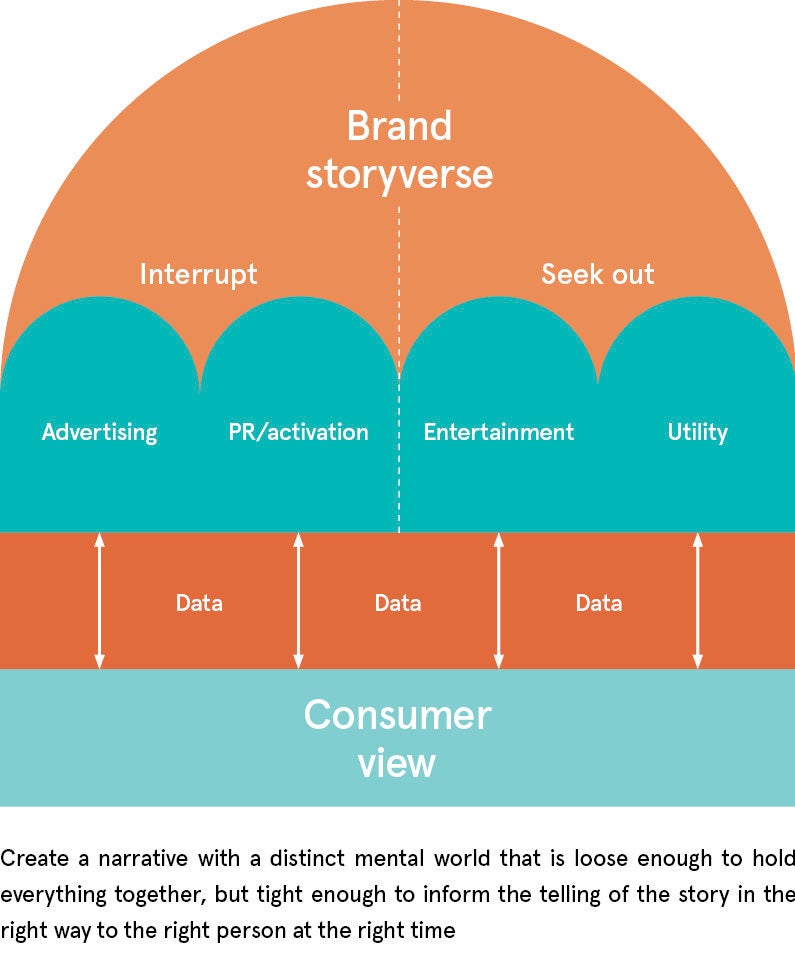There’s a popular TV show. An engaged couple are given a budget to plan their dream wedding. The catch? The entire process is left up to the groom. The bride only discovers the details on the day.
Invariably the groom knows his fiancée’s broad likes and dislikes, and vaguely what style of wedding she would like. But when push comes to shove, he blows 70 per cent of the budget on the stag do, a free bar and a DJ only he likes. The poor bride gets to the church in the back of her dad’s Toyota, there’s no budget for dress alterations and the wedding breakfast is courtesy of her future husband’s cousin’s take-away business.
The answer to this incoherence is to start with story
A wedding. But it’s not an experience anyone wants to relive any time soon. But then this style of planning was never going to be a rip-roaring success.
This is exactly what happens with ad networks. Despite marketers paying for a coherent network approach, they often end up with campaigns that reflect the network’s priorities.
Instead of the network’s creative agencies telling the brand’s story in the right way, at the right time, in the right place, to the right people, the poor souls end up shoehorning their creativity into whichever inventory their sister media agency bought two years previously.
In what is a very common practice among network agencies, deals are struck with media owners months, even years, in advance with a promise to put as much as 50 per cent of their clients’ collective ad spend through their business. This of course makes any detailed consumer insight, creative considerations or tailored targeting irrelevant. The absence of any joined-up thinking is staggering and, ultimately, destructive.

START WITH STORY
The answer to this incoherence is to start with story. To fail in this is to plan a wedding with only one side’s priorities in mind. Without a common thread to tie all the elements together, all coherency is lost.
Conversely, if every stakeholder understands a brand’s storyverse – a core narrative and the distinct mental world that goes with it – from the beginning, they will work together effectively to ensure the client gets the best results for their investment.
This is especially relevant now that consumers are hyper-connected and in charge. They are more elusive and less biddable than ever, which makes an efficient, coherent and highly targeted approach more crucial. But a joined-up approach that is needed to deliver this is not a natural arrangement for network agencies.
GO INDEPENDENT
Employ independents who can work from the same script and the benefits are multi-faceted. Independent agencies have independence of thought. They can use their independence to put your interests first. Just like a wedding is entirely bespoke and should tell you everything it can about the happy couple, so a media plan should be completely unique to the brand in question and reflect the story it wants to tell.
Whether you opt for a TV ad, create a useful app or provide a piece of entertainment, there is not a single aspect of your plan that should be approached with a one-size-fits-all attitude.
Working in this way does not need to be complex. The problem with networks is a lot of people have a vested interest in making it appear complicated. Storyverse planning is an intuitive way to bring client, and creative and media agencies together. It’s an approach that’s tight enough to ensure everything is aligned, but loose enough for each medium to play to its own strengths, so the exact story you want to tell gets told in the right way.
Otherwise you are simply being sold someone else’s wedding.
For more information please visit aesopagency.com

